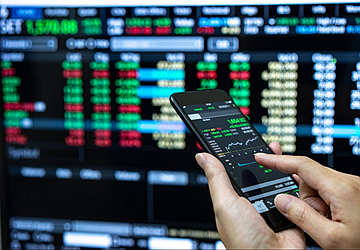Are you tired of drowning in the torrent of financial news and data? You’re not the only one! The market is prone to whims and fancies. But fret not: every explorer, after all, knows when they are heading east or west.
Our Pathfinder star, economic indicators, will help you. You’ll see the market’s trends, rely on trend-following and contrarian indicators, and make sounder investment decisions with them.
If you want to hit the mark, read this article on the top 5 economic indicators for stock trading. You will become better acquainted with the trading environment. Just grab your figurative compass, and let’s get started!

Why You Must Consider Economic Indicators to Succeed in Stock Trading?
Economic indicators are like traffic signs helping you navigate the road to wealth. They alert you to potential hazards, such as inflationary periods, or green-light it, indicating booming economic growth.
By monitoring these signs, you can adjust your strategy and avoid being taken off guard by surprise market changes.
The great news is that economic indicators can easily be accessed and digested. Almost all financial sites and media channels regularly share news about these metrics.
5 Key Economic Indicators Every Stock Trader Should Follow
Here are the top five indicators that will lifehack your trading:
1.Gross Domestic Product (GDP)
This is a significant indicator quantifying the value of all goods and services produced in a country in a given period. A high GDP indicates a country is making more and is generally positive for stock prices. Conversely, a decreasing GDP indicates an economic downturn, leading to market volatility.
Tracking GDP trends can help you determine how well the market is doing, allowing you to make an informed investment decision.
Monitor GDP growth projections. If the GDP regularly increases, this signals a bullish market; if it’s dormant or decreasing, wait cautiously.
2.Consumer Price Index (CPI)
Inflation is a hidden threat that can gradually wipe out investment gains. The CPI—short for Consumer Price Index—is a tool that helps track and measure this hidden risk.
This metric gauges the mean cost of products and services commonly purchased by families. An increase in this metric signals inflation.
Meanwhile, a falling CPI signals deflation, which is detrimental to economic growth. Knowing this index allows one to hedge against a loss of investment gains due to inflation.
Specifically, you can search for an investment that beats inflation, such as growing stocks or real estate.
3.Unemployment Rate
The unemployment rate is the percentage of the labour force currently looking for work and cannot find it. Its low unemployment rate means the economy is good, and corporations hire more workers; thus, it will be good for their stocks.
The opposite is apparent, with high unemployment that signals a weak economy as corporate profits will drop, leading to lower stocks.
It would be helpful to monitor the unemployment rate to see if consumers are confident and if corporate earnings change.
From the definition above, a steady, low unemployment rate scenario is best suited for a sector where cyclical or growth stocks are ripe. In contrast, high unemployment should signal defensive stocks like consumer staples.

4.Interest Rates
Interest rates work as a thermostat for the economy; the Federal Reserve, or your central bank, lowers them to stimulate economic activity. Lower interest rates make borrowings more accessible and spending more rewarding, potentially driving equity prices up.
On the contrary, higher interest rates signal possible low activity, contributing to market price corrections.
Knowing the current trend on interest rate change can help you anticipate changes in market sentiment and alter your investment tactics if necessary.
Look for growth stocks that benefit from borrowing and investment if interest rates are low. Switching to more stable investment options, such as bonds, might be time as interest rates rise.
5.Consumer Confidence Index
This psychological indicator indicates how optimistic consumers are about the economy and their spending power. A high Consumer Confidence Index means consumers are likely to spend more money, increasing corporate profits and stock prices.
In contrast, a low confidence index means consumers are tightening their wallets, which can decrease corporate profits and cause market declines.
Knowing the level of consumer confidence can help you predict changes in consumer cash consumption and can affect specific sectors.
When the Consumer Confidence Index rises, it may indicate good consumer spending, and you should consider buying consumer discretionary stocks. Conversely, a falling index can signal a shift in defensive sectors such as utilities.
Take Action and Navigate Your Path to Success
However, economic indicators are only part of the equation. An overall investing approach considers company fundamentals, valuation, and risk tolerance.
The more you use economic indicators in your regular research role, the greater the perspective you can have on the larger playing field. In short, don’t get discouraged by economic definitions.
Begin learning these economic indicators today and gain access to a new world of informed investment opportunities. Trade with joy!





